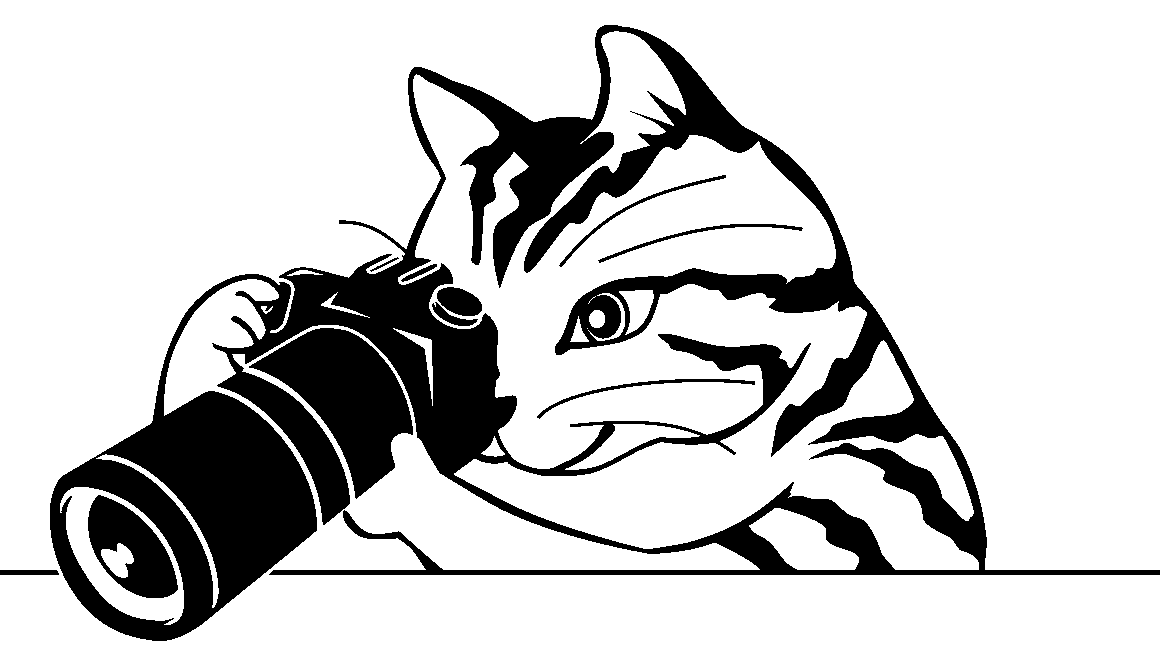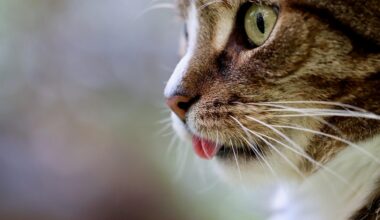Privacy Issues Regarding Photography and Filming at Cat Shows
When attending a cat show, you may notice that photography and videography are frequent activities. However, there are crucial legal considerations surrounding these practices. Firstly, it’s essential to respect the privacy of both participants and their feline companions. Many owners may not want their personal images shared on social media or used commercially without their consent. Hence, obtaining permission before photographing specific cats or exhibitors is recommended. Notably, some shows may have specific rules regarding photography to address these concerns properly and legally. This is particularly true in venues where regulations dictate that personal privacy is prioritized. Furthermore, it is salient to be aware of how different jurisdictions handle privacy laws concerning public events compared to private gatherings. Understanding local laws concerning recording in settings like these is vital so that all participants can enjoy the show without unwarranted exposure. Additionally, proper etiquette should guide photography practices to respect the essence of such a competitive and social event as a cat show. Hence, by being aware of these factors, photographers can contribute positively to the overall atmosphere and ensure compliance with legal and ethical standards.
Another important aspect of photography at cat shows is related to event organizers and their policies. Event managers typically establish guidelines that attendees must follow, which may include restrictions on the use of flash photography or where cameras can be positioned. These precautions aim not only to protect the animals but also to maintain the ambiance conducive to the judging process. Additionally, it is wise for photographers to inform the organizers of their intentions, especially if their work will be used commercially. Making sure to check in with the organizers before capturing images can help avoid any legal complications. With regards to privacy, event organizers can set specific areas where photography is and isn’t allowed, serving as a form of protection for breeders and exhibitors who may desire anonymity. Some might even require that videographers pay a fee or sign a waiver to document the event legally. Hence, understanding these nuances aids photographers in not only abiding by regulations but also building a positive rapport with those whose cats are being featured. Being respectful and communicative fosters an environment where everyone feels valued and protected.
Consent and Releases
Obtaining consent is paramount in navigating photography and filming at cat shows. Owners may be unaware that their cat’s image could become public unless explicitly informed. Hence, it’s prudent for photographers to provide clear communication about how photos will be used. A written agreement or model release form can secure this consent legally. This step can help in disputes regarding unauthorized usage later. Additionally, these agreements safeguard against instances where someone captures an image that, intentionally or unintentionally, might invade someone’s privacy. Clearly outlining in writing the purpose and future use of the images ensures everyone understands the implications. It’s significant to inform owners if the images are primarily for personal use versus potential commercial applications. Furthermore, respect for the owner’s wishes is critical if they decide against allowing their cat to be photographed. Fostering a cooperative relationship between photographers, exhibitors, and organizers can only benefit the event. By prioritizing consent in this way, photographers contribute positively to the event’s atmosphere while respecting everyone’s individual rights, fostering a community that values both creativity and privacy.
Ethical considerations extend beyond the legal requirements regarding photography and filming at cat shows. Exhibitors and breeders invest significant time and energy into preparing their cats for these events. Therefore, it is respectful to prioritize their concerns when capturing images. Often, owners take great care to present their pets in the best light, hence abrupt or invasive photography might spoil that effort. Understanding the ethical implications of capturing images at such events promotes a harmonious environment. Creators should aim to capture the competitiveness and beauty of the cats without infringing on the rights of those involved. Additionally, understanding when and where to take pictures can alleviate tension during a competitive moment and improve the overall experience for observers. Observing proper etiquette enables photographers to showcase their work while respecting the spirit of the competition. Rather than aiming for the usual action shots, photographers might focus more on the overall ambiance and excitement of the event. This approach ensures that all parties leave satisfied and enables the event organizers to maintain a positive reputation among attendees and potential future exhibitors.
Balancing Creativity and Respect
One of the challenges photographers face is balancing creativity and respect when documenting cat shows. This balance is crucial as it shapes the narrative surrounding these events. Capturing extraordinary moments while adhering to privacy laws creates opportunities for innovative storytelling. Photographers can create impactful images that embody the charm of each cat without overstepping boundaries. By engaging with exhibitors before the event, they can identify noteworthy themes or stories while respecting privacy guidelines. Additionally, sharing a few initial outputs allows owners to gauge their comfort with how their cats are represented. In doing so, photographers foster trust, enhancing their reputations within the community. Innovative angles and unique perspectives can also capture the aesthetic beauty of cat shows without compromising exhibitors’ rights to privacy. Therefore, photographers must embrace creativity while remaining consistently mindful of laws and ethics governing these photographs. Open communication and collaboration enhance the quality of both documentation and the event’s overall experience, creating a win-win situation. This cooperation can benefit future collaborations and develop a sense of community centered around respect for all involved.
Photographers must consider the aftermath of capturing images at cat shows, particularly concerning editing and sharing. After obtaining images, it’s crucial to handle the editing process thoughtfully, especially if the photos are intended for public viewing. Any modifications should uphold the integrity of the event while still meeting professional standards. Responsible editing can ensure that no one is misrepresented or unfairly portrayed in published media. Before sharing online, it’s advisable for photographers to communicate again with the respective cat owners, ensuring that all parties are comfortable with the final images. This ensures transparency in the relationship and reduces the possibility of objections or misunderstandings. Moreover, emphasizing ethical sharing practices by crediting the owners and organizers can further reinforce positive relationships within the community. Encouraging followers to respect privacy and artist rights can also promote a healthier discussion surrounding imagery in such public forums. By being aware of the repercussions of their work, photographers contribute to a culture of respect and cooperation, enhancing the reputation of both themselves and the cat show community. Therefore, it is crucial for photographic ethics to play a significant role even after taking the picture.
Legal Implications of Infringing Privacy
Infringing on privacy rights during cat shows can lead to significant legal implications for photographers and videographers. Unauthorized use of someone’s image could potentially result in lawsuits, fines, or injunctions. Many states have laws protecting the public from unauthorized commercial use of their likenesses. Furthermore, even within a public setting, individuals have rights regarding how their images are used. Carriers of liability can arise if someone’s privacy is compromised, creating a challenging situation both legally and reputationally. It’s essential for photographers to familiarize themselves with these laws to avoid infringing existing rights. This understanding also prepares them to navigate any objections or disputes that may surface during or after the event. Ensuring that all parties involved are aware of their rights and responsibilities can promote a smoother environment during cat shows, benefiting everyone. Legal considerations are not merely formalities; they serve vital functions in protecting individual privacy and securing amicable interactions at public events. Therefore, knowledge of these implications transforms casual photographers into responsible artists who respect everyone involved in the event.
As photography continues to evolve, it’s crucial for photographers to adapt to changing legal landscapes, especially regarding cat shows. The rise of social media and online sharing has dramatically transformed how images are created, shared, and perceived. Consequently, photographers must remain informed about subsequent changes in privacy rights and how these may affect their practices. Regularly reviewing and updating knowledge on relevant laws ensures compliance and preserves the integrity of their work. Engaging with professional organizations can facilitate essential discussions surrounding emerging trends and best practices related to privacy considerations. Fostering an understanding of legal responsibilities within communities that participate in cat shows can create an environment where all parties feel secure and empowered. Ultimately, being proactive about legal issues surrounding photography at cat shows contributes to creating a safer, more enjoyable space for everyone involved, especially the cats themselves. Enhancing public interest in the values of privacy and consent fosters respect throughout the entire community. Hence, photographers, organizers, and exhibitors must realize that they share responsibilities in protecting individuals’ rights. Collaboration will ensure ethical standards remain high as the industry evolves.


